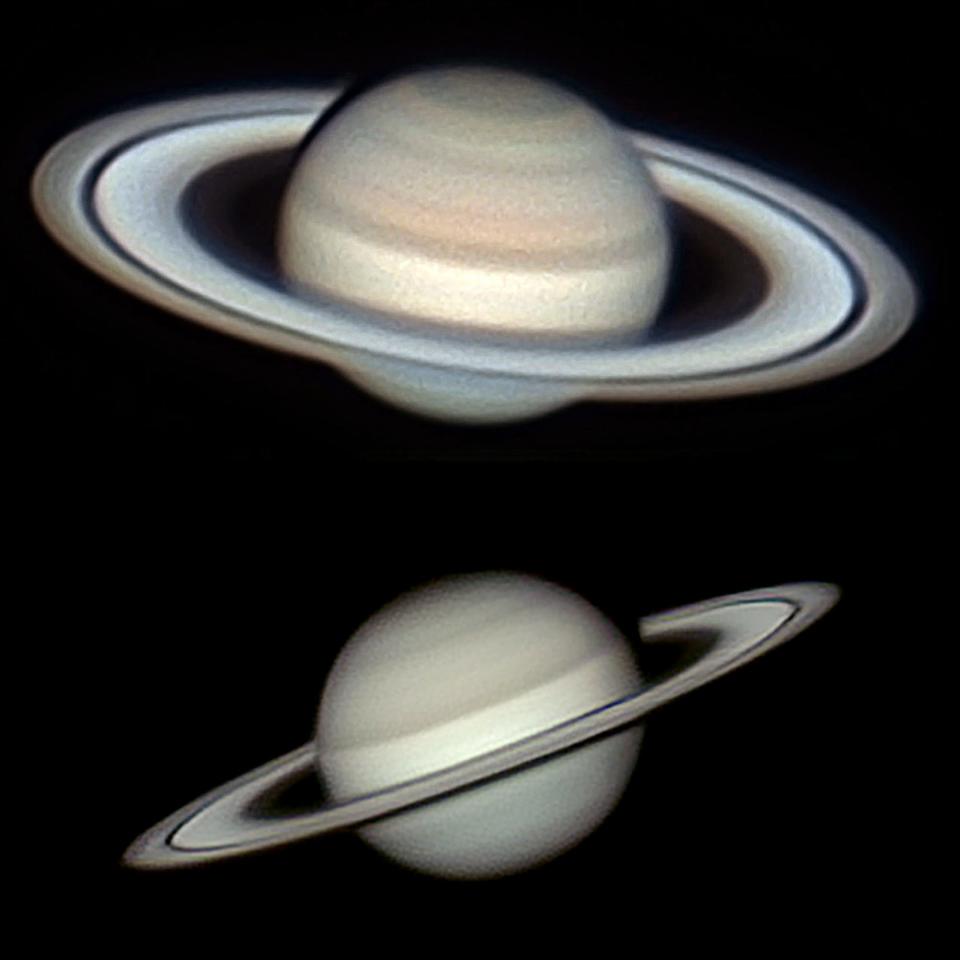Backyard Universe: Now's your chance to get a memorable view of Saturn from Fayetteville
Besides being the sixth planet from the sun and most distant planet easily visible to the naked eye, the ringed planet Saturn has another distinction.
It may well be the best reason for owning a telescope.
Back in the late 1960s when I would show Saturn to folks through my homemade telescope, more than once they would step back from the eyepiece and look for some sort of rigged system that would artificially show a photo of the ringed planet inside the scope.
But what they were seeing in the eyepiece was the real deal.
A view of Saturn in a telescope hits hard. Most folks seeing a close-up view of Saturn for the first time remember when they first saw it and who showed it to them.
Over the years we have learned that Saturn isn’t the only ringed planet since rings have been discovered around planets Jupiter, Uranus and Neptune also.
But those other ringed worlds pale in comparison to Saturn’s stunning ring system.

About those rings
Saturn’s rings are about as wide as the distance from Earth to the moon, but they are just a few feet thick. They are made of predominantly chunks of ice with bits of rock mixed in.
Twice in Saturn’s 29-1/2 year trip around the sun, or about every 15 years, the rings are presented edge-on to us. When this happens the rings practically disappear as our line of sight passes through the plane of the rings.
That ring plane crossing is coming up in 2025 so now the rings appear to be “closing up” compared to their appearance just a couple of years ago.
I could see a dramatic difference in the angle of the rings in a picture I took through my telescope back in July compared to one I shot of Saturn in August 2021.
Galileo was the first to see Saturn’s rings in a telescope, but his primitive scope in the early 1600s couldn’t show the rings for what they really are. He noted that Saturn had “handles” or "ears” protruding from opposite sides of the planet.
Better scopes in later years showed Saturn surrounded by a wide, flat ring system.
Today, most any modern small telescope magnifying at least 30 times will start to show the rings. Larger telescopes in the 6 to 12-inch diameter range will give truly remarkable Saturn views.
Saturn at opposition
The reason for devoting a column to Saturn right now is because Saturn just reached opposition on Sunday. The planet now appears opposite the sun in our sky and will be about as close to us as it ever gets. Opposition also means that on the date of opposition, Saturn rises at sunset and is visible all night.
Look for Saturn low in the southeastern sky as soon as darkness falls. It will climb higher later in the evening. Saturn will appear as a bright, yellowish “star” that won’t twinkle as much as the stars you’ll see.
Saturn with the 'blue moon'
If you still have trouble locating Saturn, and if you have clear skies tonight, Saturn will be a bright object close to the upper right of the rising full moon.
It’s a so-called “blue moon” that night, but don’t expect the moon to appear blue. It’s simply the second full moon in the same calendar month. A blue moon happens about every 2-1/2 years. Our first full moon this month was back on Aug. 1.
More: Backyard Universe: How to see two full moons and meteors in between in Fayetteville in August
Tonight's full moon will also be a “supermoon” as it will be the closest full moon to Earth for the entire year. That closeness is tough to detect visually, but a supermoon can appear up to 14% bigger and 30% brighter than a more distant full moon. Locally the full moon rises at 7:55 tonight.
If you have a telescope that night, you could have a nice view of 2023’s closest full moon and a memorable view of Saturn in the same part of the sky.
If you have a question about astronomy send it to Backyard Universe, P.O. Box 297 Stedman, NC 28391 or email johnnyhorne937@gmail.com.
This article originally appeared on The Fayetteville Observer: See Saturn's rings and a supermoon this week

